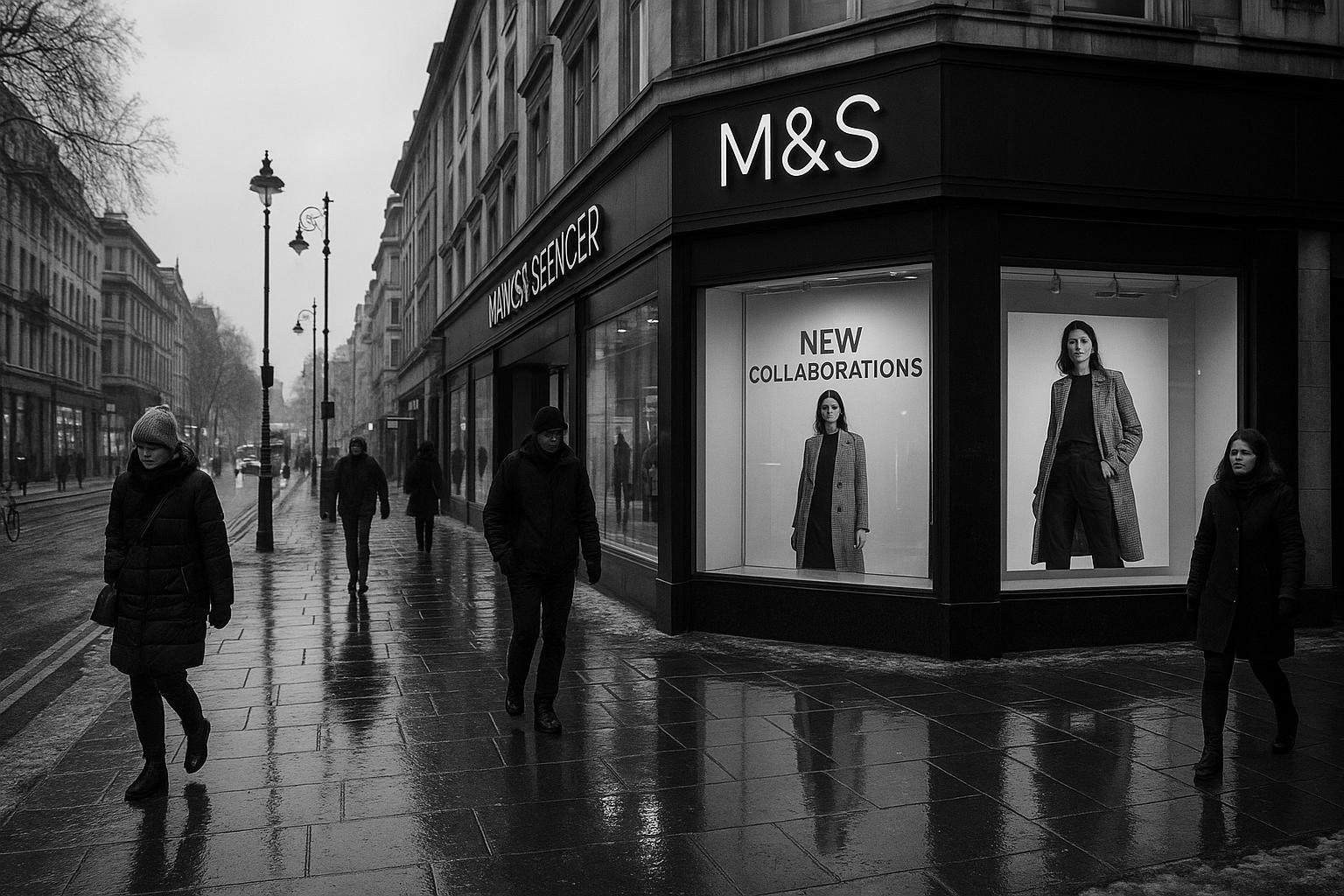When Marks & Spencer (M&S) revealed a decline in clothing sales in its latest half-year financial results, CEO Stuart Machin was quick to clarify that the dip stemmed primarily from the severe impact of a cyber-attack earlier in the year, rather than diminished consumer demand. The attack, blamed on human error, severely disrupted the retailer’s online operations around Easter, halting activity for approximately six weeks and causing widespread logistical challenges. These operational difficulties resulted in a 40% drop in online home and fashion sales, contributing to a 16.4% decrease in fashion sales overall. The half-year pretax profits plummeted by 55.4% to £184.1 million, with the total lost sales estimated at around £324 million. Though an insurance payout partially offset the losses, the attack is forecasted to cost M&S about £136 million in profits for the financial year. Despite these setbacks, Machin emphasised that demand remained strong, with the company receiving an outpouring of interest in its revitalised fashion lines, helped along by designer collaborations such as with Bella Freud.
Fashion collaborations with independent designers have become a vital lifeline for several high street retailers, offering fresh creative energy and a route to market for niche brands struggling with the financial pressures of the fashion industry. M&S’s recent partnership with London-based label 16Arlington showcases this trend. Launched just days after H&M announced a similar venture with Glenn Martens—the Belgian designer poised to take the helm at Maison Margiela—the 16Arlington collection includes standout pieces like sequin dresses and feather-trimmed tops, positioning it well for the upcoming festive season.
Across the high street, other chains have been embracing these collaborative projects. John Lewis, for instance, has launched collections with Labrum and Rejina Pyo, while Debenhams continues to build on its work with Ashish Gupta, known as the “king of sequins.” The appointment of London designer Aaron Esh as creative director at All Saints further reflects a growing emphasis on blending high fashion creativity with mainstream retail. Esh, Pyo, and 16Arlington have focused on avoiding the costly runway circuit in recent seasons, preferring collaborations as a more sustainable business strategy. Esh told The Business of Fashion that his All Saints role offers financial stability and a platform to grow his brand beyond the unpredictability of seasonal fashion cycles.
John Lewis’s two-season collaborations support designers by introducing their work to broader audiences and helping them develop new skills and knowledge within the retail framework. The department store’s fashion director Rachel Morgans emphasises that these partnerships are meant to be mutually fair and beneficial, noting strong sales performance such as the quick sell-out of Rejina Pyo’s green satin shirt and the popularity of Labrum’s duffel coat. According to retail expert Catherine Shuttleworth, these collaborations expose designers to demographic segments they might not otherwise reach, potentially encouraging consumers to explore their higher-end offerings.
Henrik Lischke, senior fashion news editor at Grazia, underscores the lifesaving role these partnerships play for small brands, providing not only an infusion of cash but significantly boosting brand recognition. “For small brands, to be picked up at M&S or John Lewis – all of a sudden Sally in Sunderland will know that brand,” he commented. This exposure also offers designers valuable insight into the workings of large retail operations, helping them refine their craft and expand their business acumen.
The benefits extend to the retailers themselves, who gain credibility and fresh creative perspectives through these collaborations, as Lischke notes. Designers bring with them a focused attention to detail, superior fabric choice, and a refined design ethos that enrich the mainstream retail experience. Morgans elaborates that the in-house design teams benefit creatively, becoming braver and more experimental after engaging with independent labels such as A.W.A.K.E Mode.
H&M’s collaboration with Glenn Martens exemplifies the creative inventiveness such partnerships can yield. Martens, whose avant-garde work at Y/Project has garnered critical acclaim, has reinvented H&M’s classic pieces with sculptural forms, trompe l’oeil detailing, and customizable elements constructed with innovative materials like foil and wiring. This 'royal twist' collection delivers versatile and playful designs that transition seamlessly from office wear to evening attire. Commentators highlight Martens’s role as both a radical thinker and a custodian of fashion creativity, evidenced by a launch event in London attended by celebrities such as actress Cynthia Erivo. Martens describes this collaboration as a ‘swan song’ to Y/Project, marking the end of that chapter while showcasing his evolution as a designer through accessible fashion.
In summary, the increasingly common collaborations between independent designers and major high street retailers represent a symbiotic relationship pivotal to the current fashion landscape. They provide designers with financial security, wider market reach, and professional growth opportunities while infusing retailers with innovation, credibility, and fresh consumer appeal. For companies like M&S, which are navigating challenges such as cyber-attacks and shifting market dynamics, these partnerships offer not just creative vitality but a vital commercial lifeline.
📌 Reference Map:
- [1] The Guardian - Paragraphs 1, 2, 3, 4, 5, 6, 7, 8, 9, 10
- [2] AP News - Paragraph 1
- [3] Fashion Network - Paragraph 11
- [4] Hypebae - Paragraph 11
- [5] The Independent - Paragraph 1
- [6] Who What Wear - Paragraph 11
- [7] W Magazine - Paragraph 11
Source: Noah Wire Services
